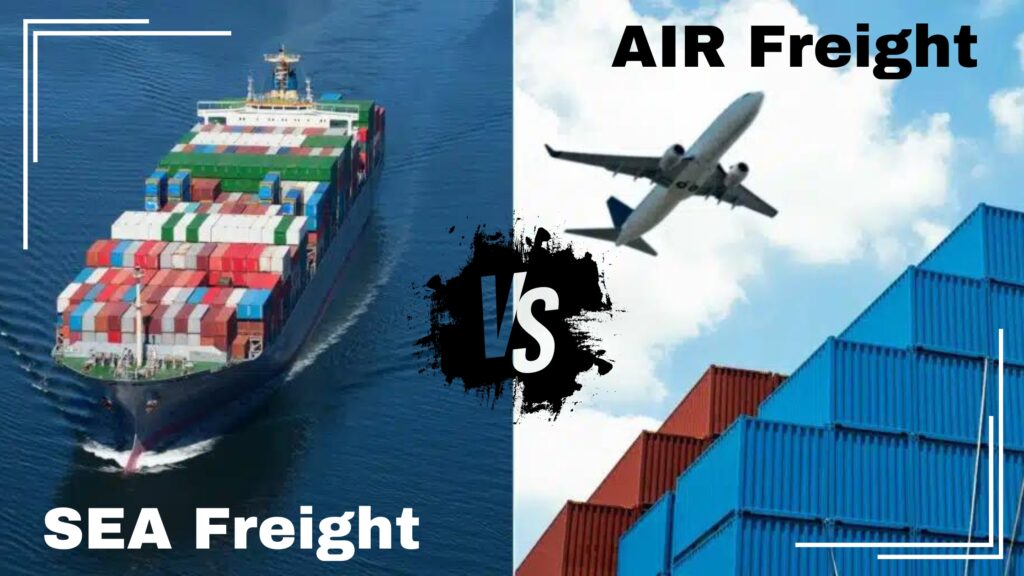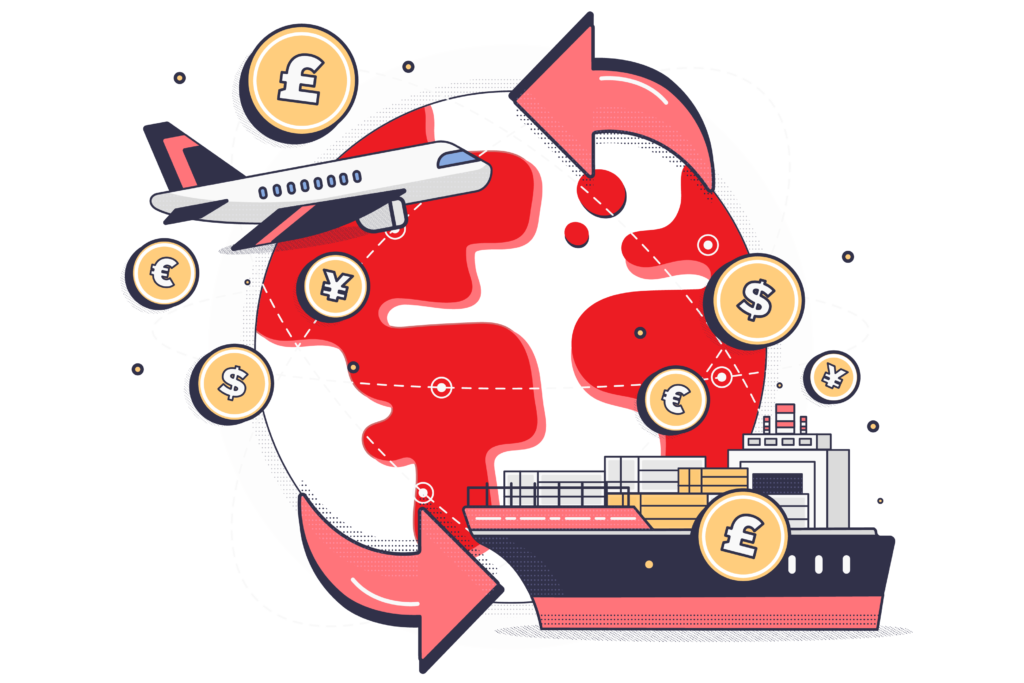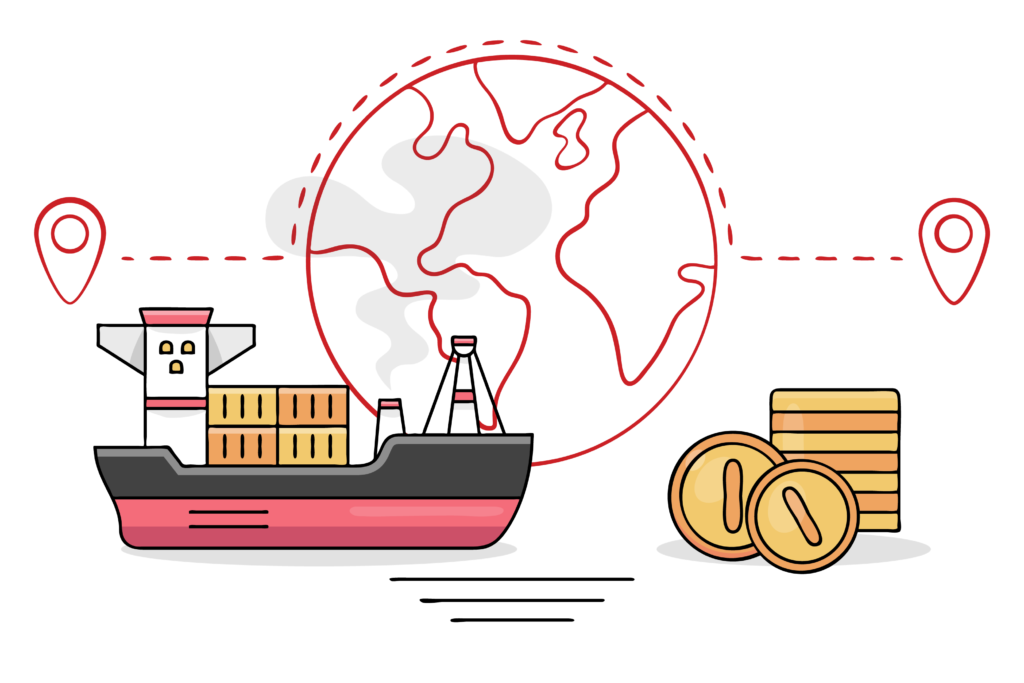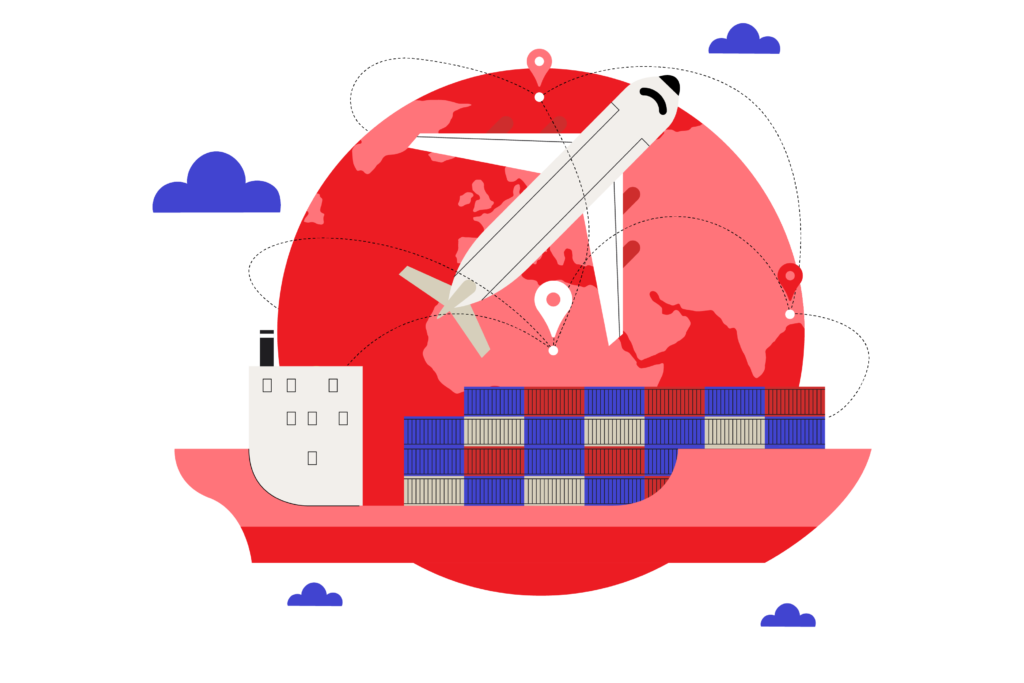Whenever global transportation is talked about, the top 2 modes of transportation that stand out are air freight and sea freight. Almost 4/5th of the world’s transportation is done through air freight, which tells you about the importance and the popularity of these 2 modes of transportation.

As we witness their popularity and applications, we must be aware of the economic and environmental impacts of sea freight vs air freight. This blog aims to break down the basics and explore the factors that tell us about the economic and environmental impacts of sea freight and how we can make the right choice for us considering these aspects.
You may be a business owner, a student, or just a curious head, we will guide you in this blog so that you create an understanding of the impacts of the two modes of transportation. Let’s get started.
Well actually, let’s just back it up a little instead, before we dive into the technicalities, let’s just explore the basics first to make sure that we all are on the same page.
What’s Sea freight?
Sea freight, or ocean freight, involves transporting goods via ships across oceans and seas. Sea freight services have been around for centuries and remain one of the most cost-effective ways to move large volumes of cargo across long distances. It is typically used for bulky items or goods with a longer lead time. In sea freight shipping charges are also typically lower as compared to air freight as there is a trade-off between money
What’s Air Freight?
Air freight logistics refers to the transportation of goods by aircraft. While it’s significantly faster than sea freight, it comes at a higher cost. Air freight is ideal for time-sensitive shipments or goods that require expedited delivery. Air freight charges are significantly higher than sea freight. Despite its higher price tag, air freight offers unparalleled speed and reliability, making it a primary choice for certain industries.
Should I Choose Air Freight or Sea Freight?

Before deciding between sea freight and air freight, it’s essential to consider various factors that can impact your logistics strategy. These factors include:
a. Cost: Sea freight is generally more cost-effective than air freight, especially for large or non-urgent shipments. However, air freight’s higher speed may justify its premium price for time-sensitive goods.
b. Transit Time: Sea freight is slower than air freight due to the nature of maritime transportation. If time is of the essence, air freight may be the preferred option despite its higher cost. So you want to decide whether you wanna trade time for money or money for time.
c. Environmental Impact: Sea freight has a lower carbon footprint compared to air freight per unit of cargo transported. Choosing sea freight over air freight can reduce greenhouse gas emissions and mitigate environmental impact.
Difference Between Air Freight vs Sea Freight Cost

It is clear that there is a significant variation in pricing structures when comparing the costs of air freight and marine freight. Sea freight is consistently the most cost-effective choice; estimates suggest that it can be five to six times or even 12 times less expensive than air freight on average.
When dealing with heavier freight, this cost difference gets even more pronounced. Air freight costs can rise sharply with increased weight, frequently exceeding four to six times the cost of sea freight for larger cargoes, but sea freight costs are mostly constant regardless of cargo weight.
When compared to marine freight, air freight has clear advantages in terms of speed, dependability, and security, despite its higher costs. The choice between air and sea freight, however, is dependent on a number of variables, such as the cargo’s features, budget, and delivery urgency.
Even while air freight is frequently chosen for shipments that must arrive quickly, sea freight is still a more economical choice, especially when shipping big quantities of products across long distances.
Economic Impacts of Air Freight vs Sea Freight
When comparing the economic impacts of air freight and sea freight, both methods play vital roles in global trade and commerce, although with distinct advantages and considerations. Sea freight stands out for its cost-effectiveness, particularly for transporting large volumes of goods over long distances.

This affordability makes sea freight accessible to businesses of all sizes, enabling them to expand their markets and reduce production costs. Moreover, sea freight supports industries such as manufacturing, retail, and agriculture by providing a reliable means of transporting raw materials and finished products across continents.
On the other hand, air freight offers unparalleled speed and reliability, albeit at a higher cost compared to sea freight. Despite its premium price tag, air freight provides businesses with the ability to meet tight deadlines and respond swiftly to changing market demands.
This speed is especially crucial for industries with perishable goods or time-sensitive products, such as pharmaceuticals, electronics, and high-end fashion. Additionally, air freight enhances supply chain efficiency by reducing inventory holding costs and minimizing the risk of stockouts, thereby improving overall business performance.
Environmental Impacts of Air Freight vs Sea Freight

It is clear from comparing the environmental effects of air and sea freight that each presents different difficulties and factors to take into account. Sea freight has its own set of environmental issues while being usually thought to have a lesser carbon footprint per unit of cargo delivered than air freight.
Pollutants and greenhouse gases are released by cargo ships, which contaminate the air and water. Moreover, there’s a potential that maritime traffic will lead to oil spills, invasive species introduction, and habitat degradation—all of which might put marine ecosystems and biodiversity at risk.
Air freight, on the other hand, has a much larger environmental impact per unit of cargo moved, although being faster and frequently more efficient in terms of travel time. Significant volumes of greenhouse gases, such as carbon dioxide, nitrous oxide, and water vapor, are released by aircraft, which worsens air pollution and contributes to climate change.
Additionally, the amount of fuel needed for air freight operations is substantial, which leads to significant fuel consumption and the release of pollutants including nitrogen oxides and sulfur oxides.
Conclusion
The choice between sea freight and air freight involves weighing various factors, including cost, transit time, and environmental impact. While sea freight offers cost-effective transportation for large volumes of cargo, air freight provides speed and reliability for time-sensitive shipments.
Businesses may make well-informed decisions that are consistent with their aims and values by knowing the effects both techniques have on the environment and the economy. So keep in mind the effects of your logistics decisions whether you’re flying the goods through the air or sending them across the ocean.
READ MORE: Complete Guide to the Success of Transport Logistics
